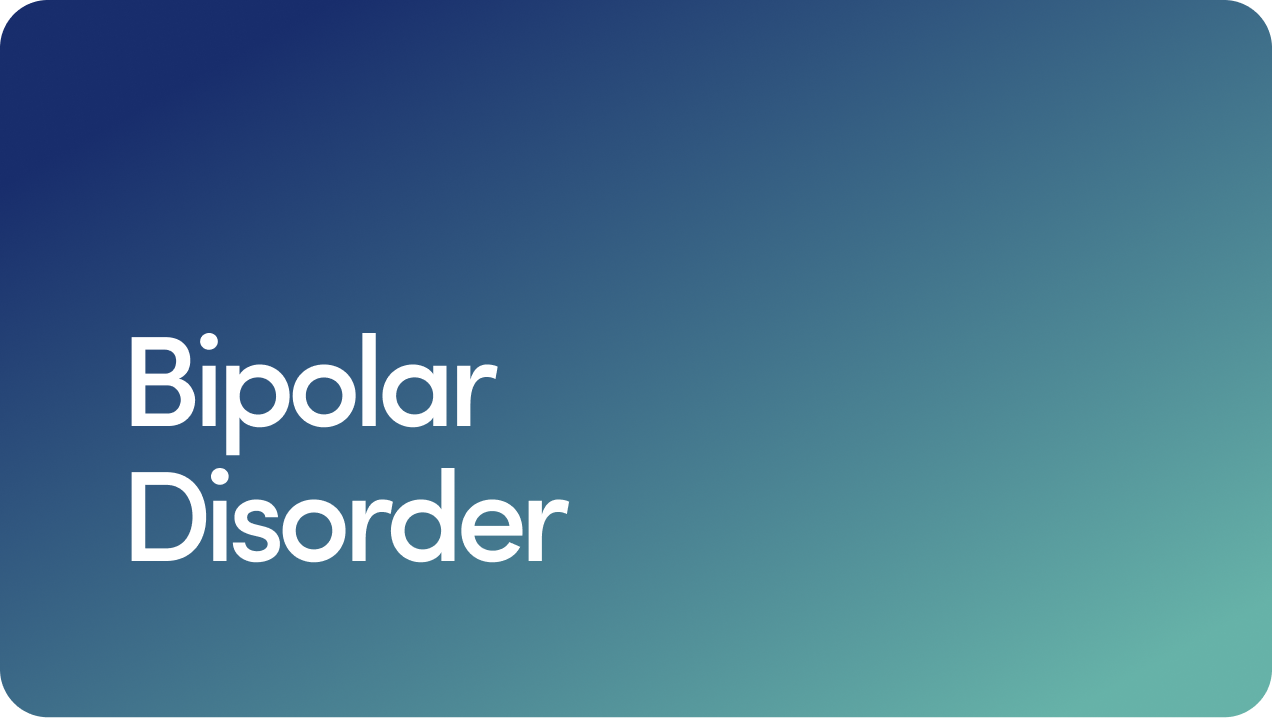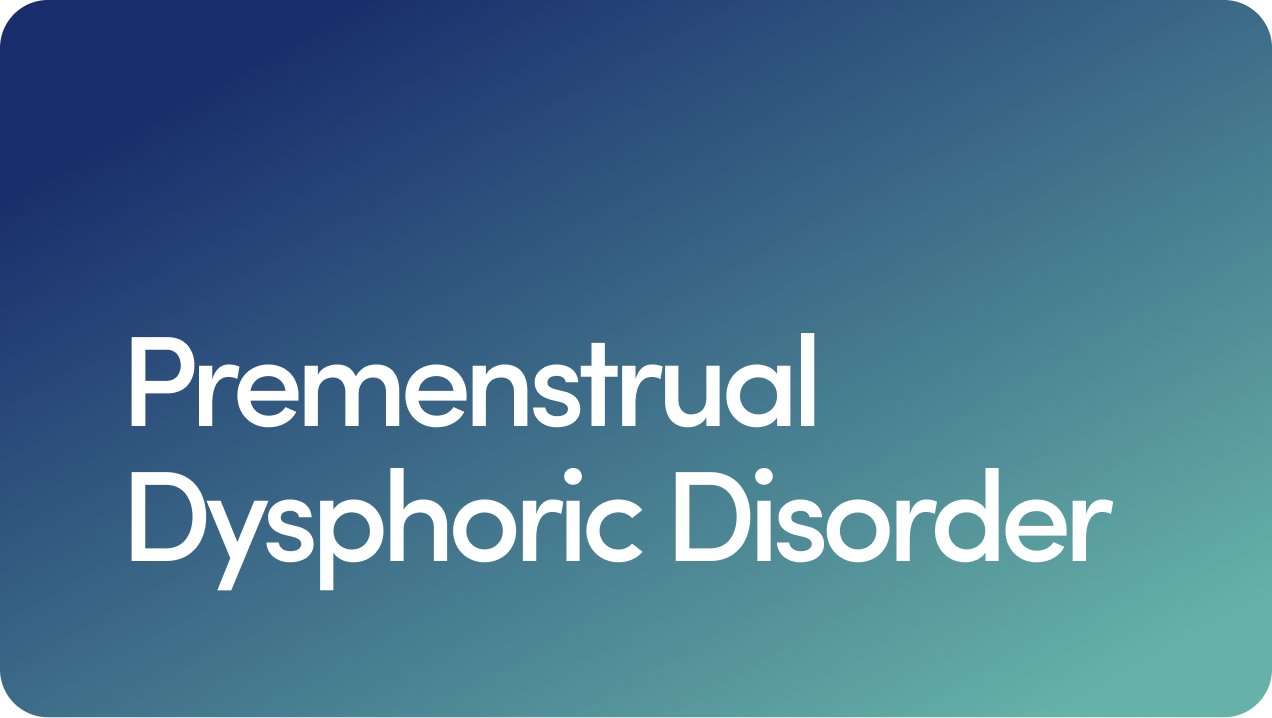Content
Free Mental Health Assessment
Switching From Prozac to Lexapro

Reviewed by Daniel Z. Lieberman, MD
Written by Hadley Mendelsohn
Published 07/10/2022
Updated 09/11/2024
If you’ve been diagnosed with major depression or an anxiety disorder, your healthcare provider may prescribe an antidepressant such as Prozac® or Lexapro®. It’s normal to change antidepressants, and if Prozac isn’t quite the right medication for you, your provider might recommend switching from Prozac to Lexapro.
Changing medications isn’t necessarily difficult, but it’s important to make the transition properly to reduce your risk of side effects, drug interactions, or withdrawal symptoms.
Below, we’ll talk about what Prozac and Lexapro are, as well as how they work to control the symptoms of depression and anxiety.
We’ll also cover everything you need to know about switching from Prozac to Lexapro, from common switching techniques to potential side effects you should be aware of.
Content
No. Prozac and Lexapro both increase the activity of certain brain chemicals that control moods and feelings. But while these antidepressant medications work similarly, they aren’t exactly the same.
Let’s unpack each medication.
What Is Prozac?
Prozac is a prescription antidepressant that contains the active ingredient fluoxetine. It belongs to a class of antidepressants called selective serotonin reuptake inhibitors (SSRIs), which work by increasing the availability of serotonin in your brain and body.
Serotonin is a naturally occurring chemical called a neurotransmitter. It’s one of several neurotransmitters that play a role in regulating moods and feelings, including anxiety and happiness.
Low levels of serotonin activity are associated with various mental health issues, including depression, anxiety, obsessive-compulsive disorder (OCD), and even suicidal ideation.
Currently, Prozac is approved by the FDA (U.S. Food and Drug Administration) to treat these conditions:
Major depressive disorder (MDD)
Bulimia nervosa
Prozac is also often prescribed off-label to treat other medical conditions, including:
Premenstrual dysphoric disorder (PMDD)
Social anxiety disorder (aka social phobia)
Raynaud phenomenon (decreased blood flow to the fingers)
Post-traumatic stress disorder (PTSD)
Selective mutism (being unable to talk in specific situations)
Off-label use means a medication is prescribed to treat something the FDA hasn’t approved it for.
Our detailed guide to Prozac has more information about how Prozac works, what it’s used to treat, potential side effects, and more.
What Is Lexapro?
Lexapro is a prescription antidepressant that contains the active ingredient escitalopram. Much like Prozac, it’s a selective serotonin reuptake inhibitor that works by increasing serotonin activity in the brain and body.
Currently, Lexapro is approved by the FDA to treat:
Major depressive disorder
Generalized anxiety disorder (GAD)
Again like Prozac, Lexapro is also sometimes prescribed off-label for similar conditions like social anxiety disorder, OCD, panic disorder, PTSD, and PMDD.
Our complete guide to Lexapro goes into more detail about how Lexapro works, what it’s used to treat, and its adverse effects.
When Should You Switch Medications?
Changing antidepressants is a normal part of treating depression and anxiety. Many people try several antidepressants before finding one that improves their symptoms without bothersome or persistent side effects.
As such, switching meds isn’t something to feel concerned about — nor is it a sign your anxiety or depression can’t be treated. Think of it as getting one step closer to finding the right type of medication for your specific symptoms and unique needs.
Your healthcare provider may suggest switching from Prozac to Lexapro if:
You have persistent symptoms that don’t improve with Prozac. Prozac can take two to four weeks to start working before you notice improvements in your feelings, moods, sleep habits, appetite, and outlook on life. But it doesn’t work for everyone. If you have depressive symptoms that don’t improve after several weeks on Prozac, you may get better results with another antidepressant like Lexapro.
You have concerning or persistent side effects from Prozac. All antidepressants can cause adverse effects, but the rate of specific side effects can vary significantly among medications. If you have persistent or bothersome side effects from Prozac, changing antidepressants may help reduce their severity and improve your quality of life.
You have a condition Prozac may not treat effectively. Certain anxiety disorders, like generalized anxiety disorder, aren’t on the approved indications list for Prozac or generic fluoxetine. If you have a form of anxiety or depression that’s better treated by another medication, it may be best to switch from Prozac.
Beyond Lexapro, several other types of antidepressants are used to treat depression and anxiety disorders. These include:
Other selective serotonin reuptake inhibitors (SSRIs). These medications also work by increasing serotonin activity. Other SSRIs include citalopram (Celexa®), paroxetine (Paxil®), sertraline (Zoloft®), and fluvoxamine (Luvox®).
Serotonin-norepinephrine reuptake inhibitors (SNRIs). These antidepressants, such as duloxetine (Cymbalta®) and venlafaxine (Effexor®), increase serotonin and norepinephrine activity. Norepinephrine is another neurotransmitter that helps with mood regulation.
Tricyclic antidepressants (TCAs). These older antidepressants — including clomipramine (Anafranil®) — typically aren’t used as first-line treatments for depression. However, your provider may prescribe a tricyclic antidepressant if Prozac, Lexapro, and similar medications aren’t effective.
Monoamine oxidase inhibitors (MAOIs). These older antidepressants are rarely used due to their risk of side effects and drug interactions. But your healthcare provider may prescribe an MAOI if newer antidepressants are unsuccessful for you.
Other antidepressants. Your medical provider might prescribe other antidepressants, such as bupropion (Wellbutrin®) or mirtazapine (Remeron®). These are considered “atypical antidepressants” because they don’t neatly fit within another category. Unlike tricyclics and MAOIs, these atypical antidepressants are often used as first-line treatments.
Our guide to depression medications goes into more detail about how these medications work, as well as the key advantages of each class of antidepressants.
How to Switch From Prozac to Lexapro
Several different methods can be used to switch antidepressants, including gradually tapering your dosage, cross-tapering, or doing a direct switch to your new medication.
Tapering involves gradually reducing your dosage of Prozac, then giving your body time to complete a “washout period” of several days (when you aren’t taking any medication). The new antidepressant is then started at a low to moderate dose, which may be adjusted over time.
It’s common to gradually taper your Prozac dosage and wait seven days before starting treatment with Lexapro. If you take Prozac at a low dose (for example, less than 40 milligrams a day), your healthcare provider may instead suggest stopping Prozac without tapering your dosage.
Other methods of switching medications, such as switching medications directly or performing a cross-taper switch, generally aren’t used with Prozac and Lexapro.
It’s important not to stop Prozac or switch to a new antidepressant suddenly without first talking to your healthcare provider.
Stopping Prozac abruptly may cause antidepressant discontinuation syndrome, which can involve withdrawal symptoms, including:
Flu-like symptoms, such as fatigue, headache, body aches, sweating, and lethargy
Insomnia and other sleep-related issues, like vivid dreams and nightmares
Balance issues, including light-headedness, dizziness, and vertigo
Sensory disturbances, such as burning, shock-like sensations, and tingling
Hyperarousal symptoms, such as irritability, agitation, anxiety, and jerkiness
These symptoms generally start within two to four days of abruptly stopping antidepressant treatment and can range from mild to moderate in severity. They can be uncomfortable, but they’re not dangerous. There’s no medical risk associated with them, and they go away as your body adjusts.
Make sure to closely follow your healthcare provider’s instructions when switching from Prozac to Lexapro. Let them know if you have any questions, need help reducing your dosage, or have any side effects or withdrawal symptoms during the switching process.
Side Effects of Prozac and Lexapro
Like all antidepressants, Prozac and Lexapro can both cause side effects. Most side effects of Prozac and Lexapro are mild and tend to resolve on their own, although some may be severe, persistent, or bothersome.
Side effects of Prozac include:
Nausea
Diarrhea or dyspepsia (indigestion)
Nervousness or anxiety
Drowsiness and yawning
Abnormal dreams
Insomnia or trouble sleeping
Asthenia (physical weakness)
Dry mouth
Weight gain or weight loss
Sweating and tremors
Rash
Vasodilation (widening blood vessels)
Prozac can cause sexual side effects, commonly referred to as SSRI-induced sexual dysfunction. These include a reduced sex drive, difficulty reaching orgasm, and, in men, slow or difficult ejaculation and erectile dysfunction (ED).
Side effects of Lexapro include:
Nausea or diarrhea
Indigestion, constipation, or abdominal pain
Insomnia
Fatigue or somnolence (drowsiness)
Dry mouth
Dizziness
Reduced appetite
Weight gain or weight loss
Sweating
Like Prozac, Lexapro can also cause sexual side effects, including a reduced level of interest in sex, difficulty reaching orgasm, and male sexual performance issues.
Prozac and Lexapro Serotonin Syndrome
Prozac and Lexapro both have the potential to interact with other medications and supplements, including other substances that increase serotonin levels. In some cases, these interactions can cause potentially serious symptoms called serotonin syndrome.
Serotonin syndrome happens when serotonin levels are too high. It can potentially cause a severe adverse reaction that may be life-threatening.
Symptoms of serotonin syndrome include:
Elevated body temperature, excessive sweating, and shivering
Tachycardia (rapid heart rate) or hypertension (high blood pressure)
Involuntary muscle jerking, overly responsive reflexes, and tremors
Dilated pupils and uncontrolled eye movement
Hyperactive bowel sounds
Increased alertness
Pressured speech
Severe serotonin syndrome can cause:
Delirium
Muscle rigidity
Seizures
Renal failure
A body temperature of 106°F or higher
Blood clotting
Respiratory distress
Coma
In some cases, it can be fatal. Make sure to tell your healthcare provider if you notice any signs of serotonin syndrome while switching medications. Seek urgent medical care if you experience any severe side effects.
To reduce your risk of developing serotonin syndrome, it’s vital to inform your healthcare provider about all medications you currently use or have used within the past 14 days.
Medications and dietary supplements that may contribute to serotonin syndrome include:
Tricyclic antidepressants (TCAs)
Monoamine oxidase inhibitors (MAOIs)
Other antidepressants
Tramadol, fentanyl, and other opioid pain drugs
Buspirone and other anxiety medications
Amphetamines
Lithium
Tryptophan
St. John’s wort
Let your healthcare provider know if you’re taking any of these other medications or supplements, and follow their medical advice. In many cases, some of these medications can be safely combined with Prozac or Lexapro, but it requires closer monitoring.
According to one national survey, roughly 10 percent of women in the U.S. suffer from a depressive episode each year, with about 23 percent affected by an anxiety disorder.
Prozac and Lexapro are both effective, popular medications for treating depression and certain forms of anxiety.
Here’s what to remember if you’re considering switching from Prozac to Lexapro:
Lexapro and Prozac are both SSRIs. They work by increasing serotonin in the brain and body.
They have different active ingredients and are FDA-approved to treat different conditions. Prozac is approved to treat MDD, OCD, panic disorder, and bulimia, while Lexapro is approved to treat major depressive disorder and generalized anxiety disorder.
It’s common and normal to switch antidepressants. If Prozac isn’t working for you, or if you have side effects that don’t seem to improve over time, your provider may suggest making the switch from Prozac to Lexapro or another medication.
Consult a healthcare professional. Make sure to closely follow your healthcare provider’s instructions when switching medications, and let them know if you experience any side effects or withdrawal symptoms.
Interested in getting help for depression, anxiety, or other mental health issues? We offer access to a range of depression and anxiety medications online for those who may benefit from them.
This article is for informational purposes only and does not constitute medical advice. The information contained herein is not a substitute for and should never be relied upon for professional medical advice. Always talk to your doctor about the risks and benefits of any treatment. Learn more about our editorial standards here.
15 Sources
- Endocrine Society. (2022). Brain hormones. https://www.endocrine.org/patient-engagement/endocrine-library/hormones-and-endocrine-function/brain-hormones
- Gabriel MA, et al. (2017). Antidepressant discontinuation syndrome. https://www.ncbi.nlm.nih.gov/pmc/articles/PMC5449237/
- Keks NI, et al. (2016). Switching and stopping antidepressants. https://www.ncbi.nlm.nih.gov/pmc/articles/PMC4919171/
- Laban TA, et al. (2023). Monoamine oxidase inhibitors (MAOI). https://www.ncbi.nlm.nih.gov/books/NBK539848/
- Landy KR, et al. (2023). Escitalopram. https://www.ncbi.nlm.nih.gov/books/NBK557734/
- LEXAPRO. Escitalopram tablets and oral solution for oral use. (2002). https://accessdata.fda.gov/spl/data/4a08b6cf-7ba0-54a9-14e0-a6e8d1e4854e/4a08b6cf-7ba0-54a9-14e0-a6e8d1e4854e.xml
- Mann J. (2013). The serotonergic system in mood disorders and suicidal behaviour. https://www.ncbi.nlm.nih.gov/pmc/articles/PMC3638390/
- Marazziti DO, et al. (2017). Understanding the role of serotonin in psychiatric diseases. https://www.ncbi.nlm.nih.gov/pmc/articles/PMC5325064/
- Moraczewski JO, et al. (2023). Tricyclic antidepressants. https://www.ncbi.nlm.nih.gov/books/NBK557791/
- National Institute of Mental Health (NIMH). (2023). Major depression. https://www.nimh.nih.gov/health/statistics/major-depression
- National Institute of Mental Health (NIMH). (n.d.). Any anxiety disorder. https://www.nimh.nih.gov/health/statistics/any-anxiety-disorder
- National Institute of Mental Health (NIMH). (2024). Depression. https://www.nimh.nih.gov/health/topics/depression
- PROZAC. Fluoxetine capsules for oral use. (1987). https://www.accessdata.fda.gov/spl/data/a99ea01f-e367-47b8-b25c-8f554314c534/a99ea01f-e367-47b8-b25c-8f554314c534.xml
- Sohel AH, et al. (2024). Fluoxetine. https://www.ncbi.nlm.nih.gov/books/NBK459223/
- Volpi-Abadie JA, et al. (2013). Serotonin syndrome. https://www.ncbi.nlm.nih.gov/pmc/articles/PMC3865832/
Editorial Standards
Hims & Hers has strict sourcing guidelines to ensure our content is accurate and current. We rely on peer-reviewed studies, academic research institutions, and medical associations. We strive to use primary sources and refrain from using tertiary references. See a mistake? Let us know at [email protected]!
This article is for informational purposes only and does not constitute medical advice. The information contained herein is not a substitute for and should never be relied upon for professional medical advice. Always talk to your doctor about the risks and benefits of any treatment. Learn more about our editorial standards here.
Daniel Z. Lieberman, MD
Education
Doctor of Medicine - New York University Grossman School of Medicine, 1992
Bachelor of Arts - St. John’s College, 1985
Training
Internship & Residency - New York University Grossman School of Medicine, 1996
Medical Licenses
District of Columbia, 1996
Maryland, 2022
Virginia, 2022
Board Certifications
American Board of Psychiatry and Neurology, Psychiatry, 1997
American Board of Psychiatry and Neurology, Addiction Psychiatry, 1998
Other Certificates & Certifications
Stanford Online, AI in Healthcare Specialization Certificate, 2025
Stanford Online, Machine Learning Specialization Certificate, 2024
Affiliations & Memberships
Specialties & Areas of Focus
Mental Health
Years of Experience
33
Previous Work Experience
Professor and Vice Chair - Department of Psychiatry and Behavioral Sciences, George Washington University, 1996–2022
Publications & Research
Title: A neurotransmitter approach to the trolley problem
Published in: OBM Neurobiology
Date: 2019
URL: https://www.lidsen.com/journals/neurobiology/neurobiology-03-02-030
Title: An automated internet application to help patients with bipolar disorder track social rhythm stabilization
Published in: Psychiatric Services
Date: 2011
URL: https://psychiatryonline.org/doi/10.1176/ps.62.11.pss6211_1267
Title: Enhancing adherence to mood charting with an online version of the NIMH Life Chart
Published in: Annals of General Psychiatry
Date: 2010
URL: https://annals-general-psychiatry.biomedcentral.com/articles/10.1186/1744-859X-9-S1-S11
Title: The role of gender in single versus married patients with bipolar disorder
Published in: Comprehensive Psychiatry
Date: 2010
URL: https://www.sciencedirect.com/science/article/abs/pii/S0010440X0900128X
Title: Evaluation of the stability and validity of participant samples recruited over the Internet
Published in: CyberPsychology and Behavior
Date: 2008
Title: Pathways to change: The effect of a Web application on treatment interest
Published in: The American Journal on Addictions
Date: 2008
URL: https://onlinelibrary.wiley.com/doi/10.1080/10550490802138525
Media Mentions & Features
Washington Post, Why do passengers freak out on airplanes? Science might have the answer.
Associated Press, MillerCoors Tapping Into Millenials
The Washington Post, Holiday drinking can be hard on your health, but you can take precautions
Le Figaro (France), Daniel Z. Lieberman: «La dopamine nous pousse à acheter en nous promettant le bonheur» (Daniel Z. Lieberman: “Dopamine drives us to buy by promising us happiness”)
Men’s Health (Spain), Cómo la dopamina influye en nuestro cerebro y determina nuestra vida (How dopamine influences our brain and determines our lives).
CNBC, The psychological reason it’s so hard to work today after the riot — and how to cope
Business Insider, The reason why we self-sabotage is because our brains are wired to resist the things we want most in life
U.S. News & World Report, How Your Secrets Can Damage and Maybe Even Kill You
Why I Practice Medicine
I practice medicine because I believe that mental health is the foundation of a meaningful life. When people suffer psychologically, it touches every part of their existence—from relationships to work to the simple ability to feel joy. Because it can be so difficult for people who are suffering to find good mental health care, my mission has been to expand access through technology, so that no one is left behind.
Hobbies & Interests
I like to write in my spare time. I’ve written two nonfiction titles, Spellbound: Modern Science, Ancient Magic, and the Hidden Potential of the Unconscious Mind and the international bestseller, The Molecule of More: How a Single Chemical in Your Brain Drives Love, Sex, and Creativity--and Will Determine the Fate of the Human Race
Professional Website or Profile
danielzlieberman.com
Related Articles
Related Conditions
 Anxiety
Anxiety
 Depression
Depression
 OCD
OCD
 PTSD
PTSD
 Bipolar Disorder
Bipolar Disorder
 Premenstrual Dysphoric Disorder
Premenstrual Dysphoric Disorder